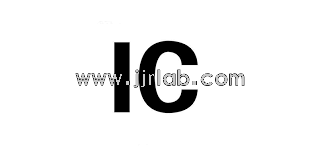
How to get EN 12790 Test Report?
Rocking chairs are generally used for babies who are not yet able to sit up independently (approximately 0 to 6 months old). Fixed or folding reclining cradles or rocking chairs for babies with a weight not exceeding 9 kg or those unable to sit are applicable. On March 8, 2023, the European Committee for Standardization (CEN) released the updated reclining cradle standards EN 12790-1:2023 and EN 12790-2:2023, replacing the previous version EN 12790:2009. All conflicting national standards shoULd be repealed by March 2024.
According to Amazon's requirements, all baby rocking chairs must undergo testing and comply with one of the following specific regulations or standards:
One of the following:
1. EN 12790:2023 Test Report or Certificate (Children's Use and Care Articles - Reclining Cradles);
2. EN 16232:2013 (Children's Use and Care Articles - Baby Cradle Swings);
3. EN BS EN 14036:2003 (Children's Use and Care Articles - Baby Rocking Chairs).
What is the EN 12790 Test Report?
EN 12790 is a European standard regarding the safety, stability, and durability of baby cradles and baby beds. This standard includes test methods, safety requirements, and certification procedures for cradles and baby beds. It aims to REDuce the risk of injury to babies due to misuse or product defects.
EN 12790 Test Content:
1. Static Stability Test: Tests the stability of the cradle in various configurations to ensure it does not tip over during placement and use.
2. DynaMIC Stability Test: Simulates baby movements in the cradle to assess its stability under dynamic conditions.
3. Test of Sleeping Bag and Soft Padding Materials: Checks the flammability of sleeping bags and soft padding materials to ensure they do not ignite easily.
4. Sharp Edges and Corners Test: Inspects all edges and corners of the cradle to ensure they do not pose a risk of injury to the baby.
5. Mechanical Hazard Test: Evaluates potential mechanical hazards on the cradle, such as holes or protruding screws, ensuring they do not harm the baby.
6. Formaldehyde Emission Test: Tests for formaldehyde emission from cradle materials to ensure they do not pose a health risk to the baby.
7. Extractable Substances Test: Checks for harmful extractable substances in cradle materials to ensure they do not pose a health risk.
8. Durability Test: Simulates the durability of the cradle under normal usage conditions, including repeated rocking motions.
9. Safety Belt and Restraint System Test: Checks the functionality and durability of the safety belts and restraint systems to ensure they work effectively in case of a cradle tipping over or other emergencies.
10. Packaging Test: Ensures that the product's packaging protects the cradle from damage during transportation and distribution.
These test methods are just a part of the EN 12790 standard and typically require professional testing equipment and laboratories. Manufacturers must conduct comprehensive product testing according to the standard's requirements and provide the corresponding test reports and certifications to demonstrate that their products comply with safety standards.
EN 12790 Certification Process for Baby Cradles:
1. Complete the product testing application form;
2. Provide samples to the JJR testing facility in China;
3. Confirm the standard, obtain a quotation, make payment, and the laboratory arranges testing;
4. Receive the electronic draft report if the test is successful;
5. Upon confirmation, the official certificate report is issued.
Email:hello@jjrlab.com
Write your message here and send it to us
 Amazon ISO/IEC 17025 UL Testing Service Laboratory
Amazon ISO/IEC 17025 UL Testing Service Laboratory
 How to get CE Certification for Lighting Products?
How to get CE Certification for Lighting Products?
 CE Certification Standards & Process for Elect
CE Certification Standards & Process for Elect
 Japan METI Registration & Japanese Agent Servi
Japan METI Registration & Japanese Agent Servi
 Temperature Shock Test (IEC 60068-2-14:2009)
Temperature Shock Test (IEC 60068-2-14:2009)
 Electromagnetic Compatibility (EMC) Testing Servic
Electromagnetic Compatibility (EMC) Testing Servic
 Canada ISED Certification (IC Certification) Analy
Canada ISED Certification (IC Certification) Analy
 CSA C22.2 No.42 Compliance Test Report for Amazon
CSA C22.2 No.42 Compliance Test Report for Amazon
Leave us a message
24-hour online customer service at any time to respond, so that you worry!




